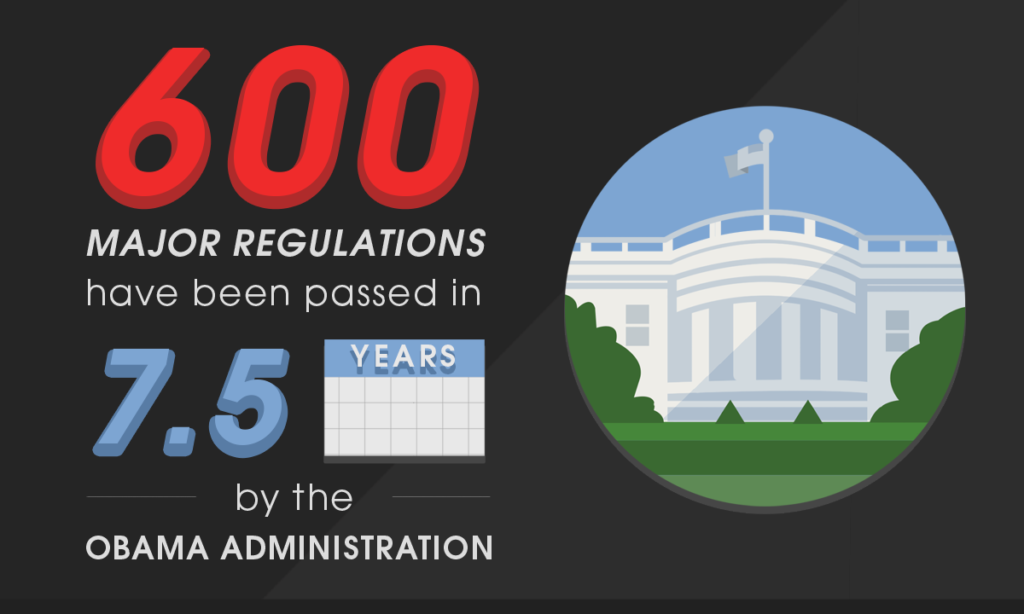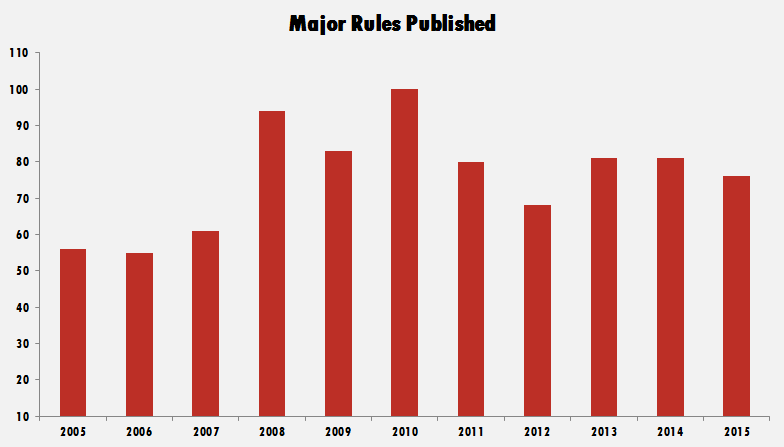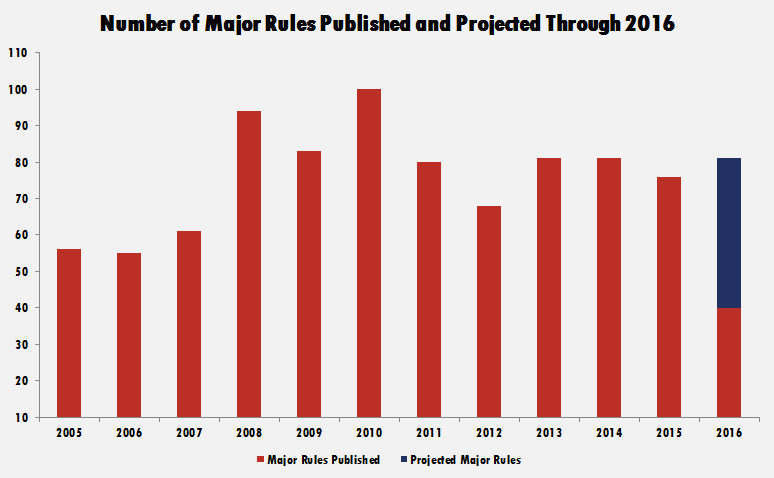Insight
August 6, 2016
600 Major Regulations

One year ago, the American Action Forum (AAF) celebrated a regulatory milestone, of sorts: 500 major regulations. A major regulation has an economic impact of $100 million or more and can significantly affect prices for consumers. In more than six years in office, President Obama had imposed more regulations than President Bush did in eight years. Now, the administration has once again reached another record-breaking figure: 600 major regulations in roughly 7.5 years, which is 20 percent more than the previous president did in eight years.
The chart below captures the major rules published from 2005 to 2015. During President Obama’s tenure, the nation has averaged roughly 81 major rules annually.
The federal government is open approximately 250 days annually, so this equates to a major regulation every three days or nearly two per week. What is the economic burden from these 600 major regulations? According to American Action Forum (AAF) research, based on data provided by agencies, it’s at least $743 billion (including deregulatory measures) and 194 million paperwork burden hours (President Bush issued roughly $2 billion in major rules in 2009). To put those figures in perspective, $743 billion is larger than the Gross Domestic Product (GDP) of Norway and Israel combined. It is a $2,294 regulatory imposition on every person in the United States. In the equivalent amount of time to complete 194 million additional hours of paperwork, it would take 97,429 employees working full-time (2,000 hours a year) to comply with these new federal requirements. That’s roughly the population of Albany, NY working full-time filling out government forms.
Through the final July of his term, President Obama has issued 600 major rules. Compare this to President Bush at 426 major rules; President Obama has already imposed 40 percent more major regulations than his predecessor, in spite of President Bush’s regulatory response to 9/11 and implementing Sarbanes-Oxley rules.
The Future
Implementing 600 major rules might sound like eight or nine years of regulation, but this doesn’t mark the end of President Obama’s regulatory streak. Even though the president and his regulators have already issued 40 major rules in 2016, with an average of 81 major rules annually, the nation is still not halfway to the administration’s “regulatory budget” this year. See graph below on projections through 2016.
Thus, conservatively, President Obama is on pace to issue 641 major regulations (assuming 81 major rules in 2016). This figure also discounts the generally active “midnight” period between Election Day and the following Inauguration Day. President Clinton issued 19 notable regulations during his lame duck January and President Bush issued 10 major rules. President Obama could easily top 650 major rules by the time the next president takes the oath of office (31 percent more than his predecessor).
What will the final tally be for major regulations? To date, the administration’s major rules have cost, on average, $1.4 billion. With the possibility of 50 more rules, the lame duck tally could push this regulatory cost figure to $813 billion ($743 billion base plus $70 billion in future rules). That’s more than the GDP of the Philippines, a country with 100 million people.
So, what’s left to regulate? How does the administration get to $813 billion? Here’s a brief overview of what remains pending on the regulatory agenda:
- Greenhouse Gas Standards for Heavy-Duty Trucks (proposed cost $31 billion): the second round of efficiency standards for trucks and engines could get the administration halfway to its estimated regulatory tab. The rule is scheduled to be final by the summer.
- Federal Policy for the Protection of Human Subjects (proposed cost $13.3 billion): this little-known rulemaking, co-authored by every cabinet agency, could also impose more than 12.1 million paperwork burden hours.
- Efficiency Standards for Manufactured Housing ($4.1 billion): the most expensive of the proposed efficiency standards, this measure was published in June. A midnight rush could allow the administration to publish the final rule by next January.
Conclusion
If 500 major regulations weren’t shocking to the administration, surely 600 will be another afterthought to them. However, for the American people, someone must pay the cost for more than $740 billion in regulatory burdens. Employees could pay through reduced wages or unemployment. Shareholders could pay through lower returns. Eventually consumers could bear this burden in the form of higher prices. Although major rules will persist into 2017, consumers can take solace knowing the administration that set records for regulatory expansion will have a firm expiration date next January.












